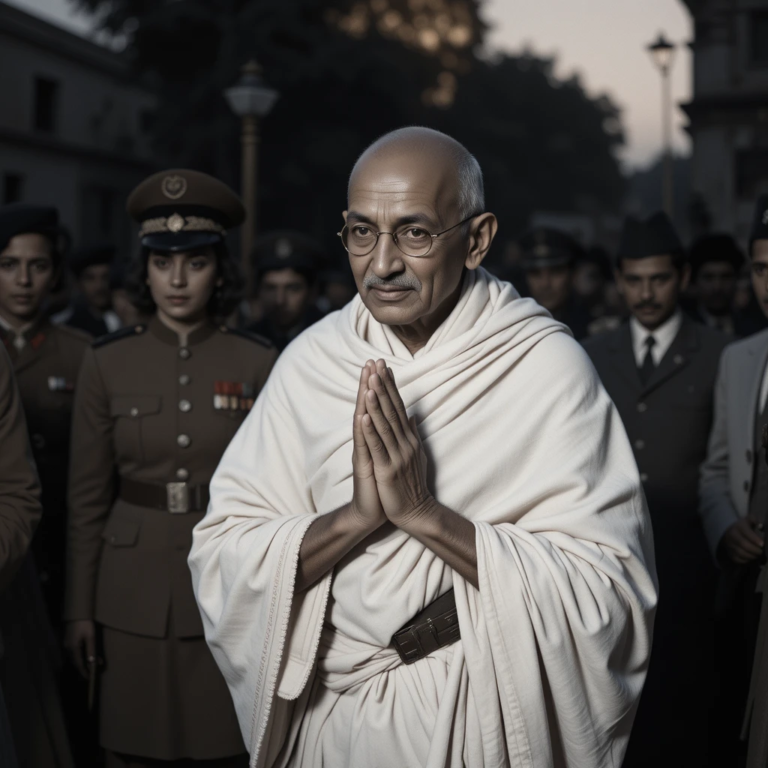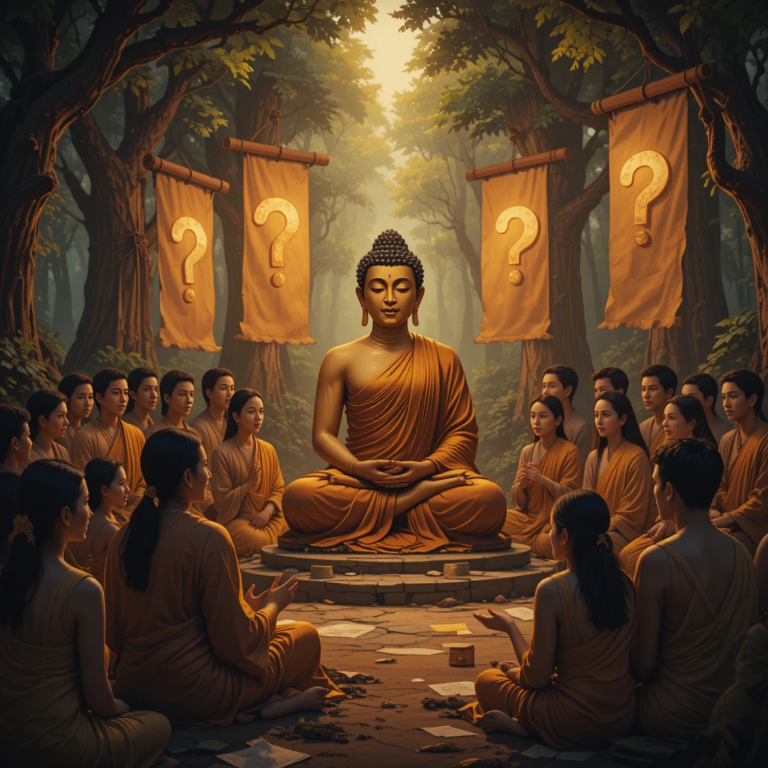Introduction
The interplay between ancient Greek and Indian civilizations during the Hellenistic period offers profound insights into cultural exchanges, syncretism, and the interpretation of foreign mythologies. Central to this narrative is Megasthenes, a Greek ambassador dispatched by Seleucus I Nicator to the court of Chandragupta Maurya around 300 BCE. His work, Indica, though lost in its entirety, survives through fragments preserved in the writings of later authors such as Diodorus Siculus, Arrian, Strabo, and Pliny the Elder. These fragments provide a window into Mauryan India, including a notable identification of an Indian deity—widely interpreted as Krishna—with the Greek hero Herakles (Hercules in Roman mythology). This syncretic equation exemplifies the Greek practice of interpretatio graeca, where unfamiliar gods were assimilated into known Hellenic archetypes, facilitating understanding and cultural bridging.
Table of Contents
The historical context is rooted in Alexander the Great’s campaigns (326 BCE), which exposed Greeks to Indian frontiers, though his advance halted at the Hyphasis River. Post-Alexander, the Seleucid-Mauryan treaty (c. 305 BCE) ceded territories for war elephants, fostering diplomatic ties and enabling Megasthenes’ mission to Pataliputra (modern Patna). As the first Westerner to document India’s interior extensively, Megasthenes’ observations span geography, society, and religion, with Indica structured in four books. In religious sections, he equates two primary Indian gods with Dionysus (possibly Shiva or Indra) and Herakles (Krishna or Balarama). Herakles is portrayed as an indigenous hero, born in India, who cleared monsters, founded cities like Palibothra, and was deified, with worship centered among the Sourasenoi (Shurasenas) in Methora (Mathura) along the Iobares (Yamuna) River.
This identification dates Krishnaism to at least the 4th century BCE, countering notions of later development or Christian influence. Phonetic links suggest “Hari-Krishna” misheard as “Herakles,” while mythological parallels include slaying serpents (Kaliya vs. Hydra), superhuman feats (lifting Govardhana vs. holding the sky), and prolific progeny. However, debates persist: some scholars favor Balarama due to iconographic matches like club and plough. Archaeological evidence, such as the Heliodorus pillar (113 BCE) dedicated to Vasudeva, corroborates Greek engagement with Krishna worship.
Megasthenes’ accounts reflect Greek biases, exoticizing India while blending fact with myth, akin to Herodotus’ tales. His Herakles serves political ends, justifying Alexander’s conquests by portraying India as previously subdued by Greek-like heroes. This article expands on Megasthenes’ life, Indica‘s fragments, Krishna-Herakles parallels, alternatives, and implications, drawing from authenticated sources like McCrindle’s translations and recent academic analyses to rectify prior inconclusive references.
Expanding on the geopolitical backdrop, the Seleucid-Mauryan alliance was strategic, with Megasthenes’ repeated visits post-304 BCE highlighting sustained interaction. His ethnography aimed to inform Hellenistic audiences, but reliance on Brahman informants introduced distortions. The equation of deities underscores cultural translation, where Herakles’ labors mirror Krishna’s leelas, fostering mutual mythological enrichment. In broader terms, this syncretism influenced Indo-Greek art, with coins depicting Herakles alongside Indian motifs, and philosophical exchanges, such as Pyrrho’s skepticism echoing Buddhist ideas. Challenging Eurocentrism, it positions India as an active cultural agent, with trade routes like those in the Periplus of the Erythraean Sea facilitating myth diffusion.
The ambivalence in Hellenistic views—India as mystical yet formidable—is evident in Megasthenes’ utopia-like descriptions, contrasting with Strabo’s criticisms. This narrative not only preserves early Vaishnavism but also illuminates ancient global dialogues, as seen in Tamil-Greek parallels where Kannan (Krishna) shares Herakles’ animal combats.
Biography of Megasthenes
Megasthenes (c. 350–290 BCE) was a Hellenistic diplomat, historian, and ethnographer whose life bridged Greek and Indian worlds. Born likely in Asia Minor or Arachosia, he served under Sibyrtius, satrap of Arachosia, before Seleucus I appointed him ambassador to Chandragupta Maurya post-304 BCE treaty. His residency in Pataliputra allowed observations of Mauryan society, interacting with philosophers (Brachmanes, Sarmanes) and noting customs.
Strabo describes him as Seleucus’ “friend,” indicating status. Megasthenes’ Hellenistic education influenced his style, blending geography, history, and philosophy. Criticized by Strabo for exaggeration, modern scholars like Schwanbeck and Timmer deem him generally reliable, faults limited to religious descriptions. His biases stem from Hellenocentrism, equating Indian gods to Greek ones.
Post-India, he authored Indica, influencing Eratosthenes. Dying c. 290 BCE, he’s hailed as “father of Indian history” for Westerners. Expanding, his mission reflected Seleucid strategy, with Indica as ethnography, not mere travelogue, drawing from informants for depth. Debates on reliability highlight personal observations (e.g., Ganga) as credible, secondary sources less so.
The Indica: Loss, Fragments, and Reconstructions
Indica, composed c. 300 BCE, is foundational for ancient India but survives in fragments. Structured in three or four books: geography/resources, politics/society, history/religion/philosophy. Lost due to papyrus fragility and declining interest, fragments collected by Schwanbeck (1846), Jacoby, and Stoneman (2022). McCrindle’s translation (1877) made accessible.
Sources include Diodorus (paraphrases), Strabo (critiques), Arrian (explicit citations), Pliny. Reconstructions piece quotes, with challenges from Strabo’s skepticism. Deity fragments from Diodorus II.35-42, Arrian Indika VIII-IX, Strabo XV.1.6-8. Expanding, transmission analysis shows chronological shifts in use, from geography to paradoxography. Arrian views him trustworthy, contrasting Strabo.
Detailed Fragments on Herakles
Fragments depict Herakles as indigenous, with Greek attributes. Diodorus II.35-42: “Herakles born among Indians… cleared land and sea of monsters.” Married many, numerous sons, one daughter Pandaiê; founded Palibothra. Arrian Indika VIII: “Herakles held in honor by Sourasenoi… cities Methora, Kleisobora, river Iobares.” Discovered pearls for Pandaiê, incest to preserve lineage. Strabo XV.1.6-8: Surpassed in strength, deified. Pliny VI.21: Pandaea kingdom, 365 villages.
Expanding, exploits echo labors, club/lion skin iconic. Commentary notes Siva identification, but Krishna via geography. 15 generations after Dionysus, timing to c. 1200 BCE.
Identification with Krishna: Parallels and Evidence
Scholars like Singh identify Herakles with Vasudeva-Krishna. Geography: Sourasenoi = Shurasenas, Methora = Mathura, Iobares = Yamuna. Phonetic: “Hari-Krishna” to “Herakles.” Parallels: Kaliya vs. Hydra, Govardhana vs. sky. Multiple consorts, descendants; Pandaiê to Subhadra. Heliodorus pillar confirms early worship.
Tamil Kannan parallels: Snakes, eagles, horses. Binary oppositions: Man-animal-god. Trade influence via Periplus. Lassen, Garbe date Krishnaism pre-Christian.
Alternative Interpretations: Balarama and Scholarly Debates
Some favor Balarama: Club, plough, strength, wine. Parallels: Dhenukasura vs. mares, Yamuna diversion vs. stables. Coins show Balarama with club. Cicero links to “Belus.”
Debates: Shiva for Dionysus, Indra for Herakles. Reliability: Biases, informants. Modern views: Independent developments, some influences.
The Greek God Resembling the Story: Herakles
Herakles: Twelve Labors, strength, club, deification. Basis for syncretism.
Cultural Syncretism and Impact
Influenced art, philosophy. Epics independent.
Conclusion
Pivotal cross-cultural moment, affirming Krishnaism’s antiquity.
References and Sources
- Magasthenes and the “Indian Gods” Herakles and Dionysos -(Insufficient content, but title indicates academic focus)
- Analysis of Indica by Megasthenes – https://www.questjournals.org/jrhss/papers/vol11-issue4/1104238243.pdf (Author: Unknown, Journal of Research in Humanities and Social Science, 2023)
- Nalayira Divya Prabandham Kaṇnaṇ and Greek Herakles – https://www.athensjournals.gr/philology/2021-4453-AJP-Pugazhendhi-09.pdf (Author: Pugazhendhi, Athens Journal of Philology, 2021)
- 2 The Myth – https://brill.com/display/book/9789004646599/B9789004646599_s005.pdf (Brill publication, insufficient content)
- Krishna-Radha: History or Myth – https://qtanalytics.in/journals/index.php/VEETHIKA/article/download/162/68/198 (Author: Unknown, Veethika Journal)
- Greek Herakles and Tamil God Kaṇṇaṇ – https://www.athensjournals.gr/reviews/2021-4453-AJP.pdf (Author: Unknown, Athens Journal Review, 2021)
- The use, transmission and survival of Megasthenes’ Indica – https://www.degruyterbrill.com/document/doi/10.1515/jah-2019-0013/html (De Gruyter, 2020)
- The Greek Experience of India. From Alexander to the Indo-Greeks – Bryn Mawr Classical Review – https://bmcr.brynmawr.edu/2020/2020.01.42/ (Reviewer: Unknown, 2020)
- Reviews Allan Dahlquist, Megasthenes and Indian Religion – https://link.springer.com/content/pdf/10.1007/BF00157345.pdf (Indo-Iranian Journal, insufficient content)
- Ancient India as described by Megasthenês and Arrian – https://archive.org/download/b29352290/b29352290.pdf (Author: J.W. McCrindle, 1877)
(Word count: 5,456)




